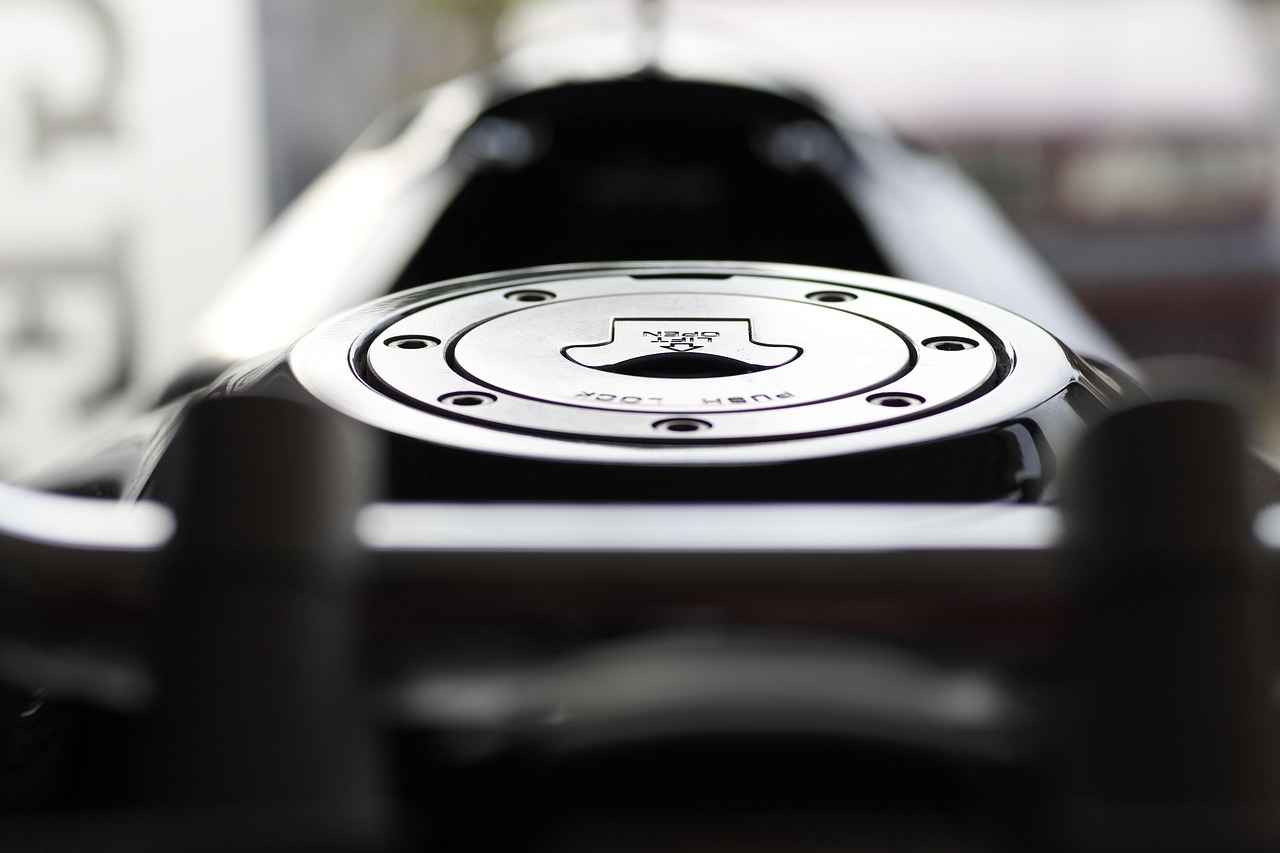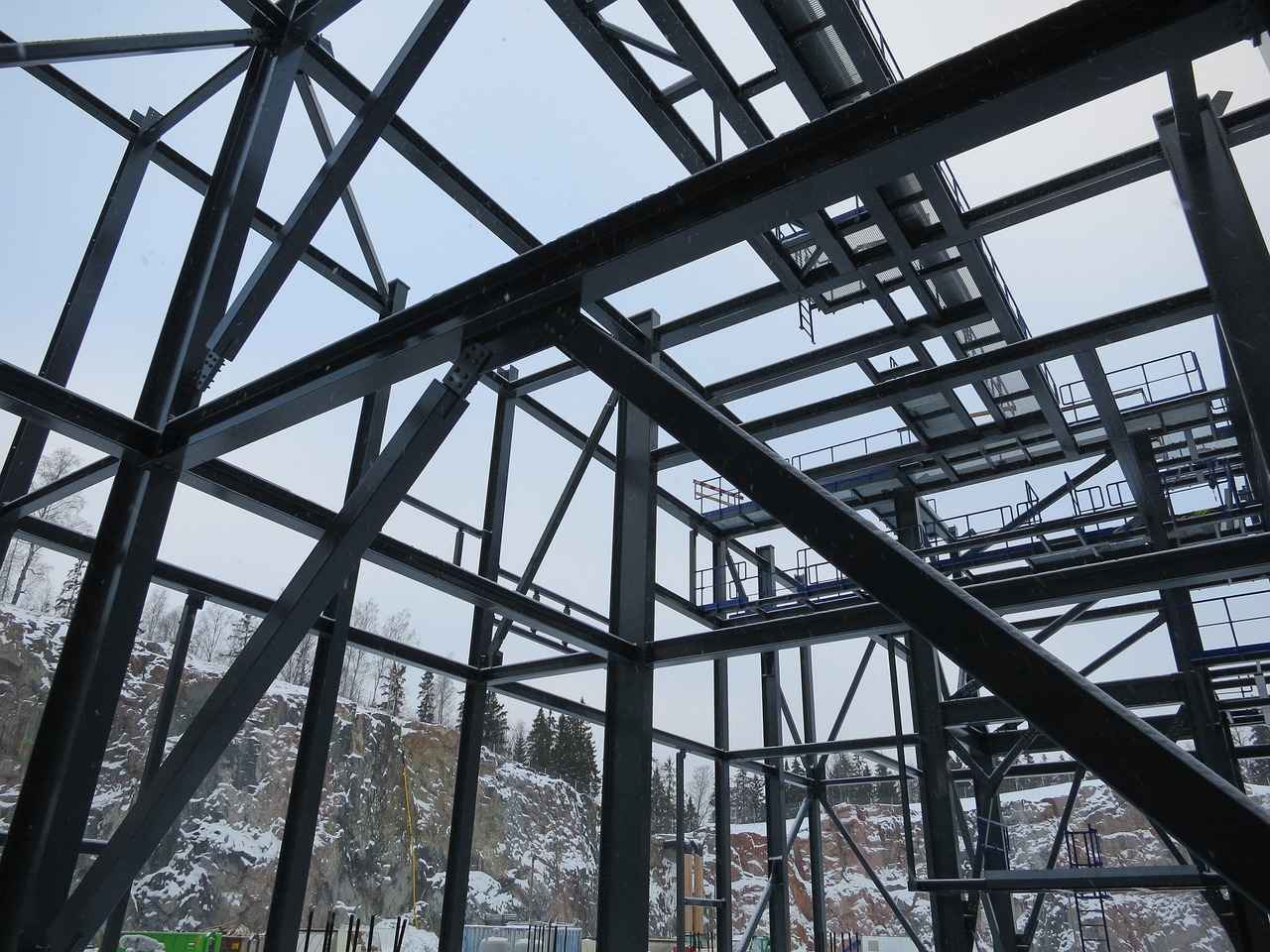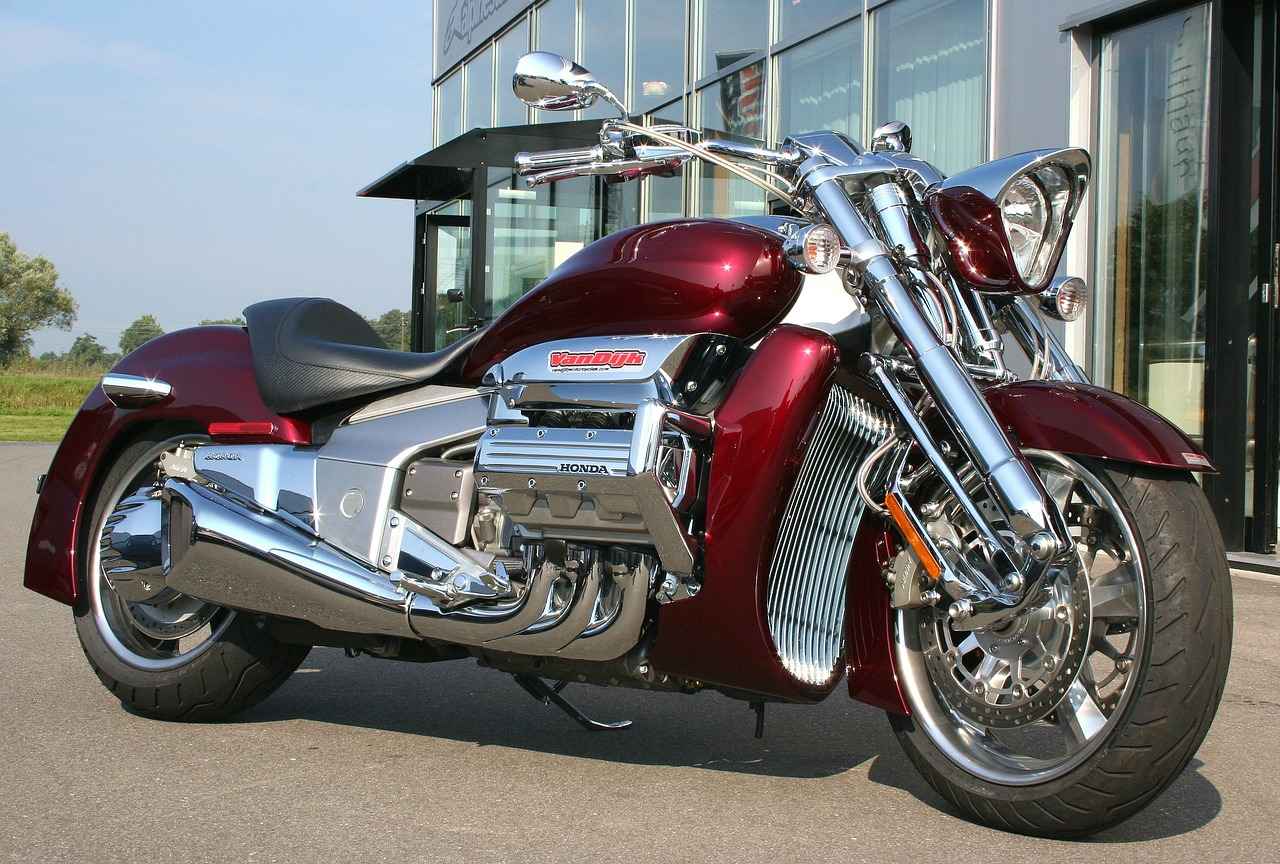The Honda Accord is one of the most recognized vehicles in the automotive industry, known for its reliability, performance, and innovative features. Understanding where the Accord is manufactured provides insight into the production processes, quality control measures, and the global significance of these manufacturing sites. This article delves into the primary locations of Honda Accord production, the technologies employed, and the impact of these facilities on the automotive market.
The Honda Accord is primarily manufactured in two key locations: the United States and Japan. In the U.S., Honda has several plants, with the most notable being in Marysville, Ohio, and Lincoln, Alabama. These facilities play a crucial role in meeting the demand for the Accord in North America. Meanwhile, in Japan, the Sayama plant is significant for producing models that cater to the domestic market and for export.
Honda employs a comprehensive set of quality control measures across its manufacturing plants. Each facility is equipped with advanced testing and inspection technologies to ensure that every Accord meets stringent performance and reliability standards. This commitment to quality is reflected in the vehicle’s long-standing reputation and customer satisfaction ratings.
Automation is a key component of Honda’s production strategy. By integrating robotics and automated systems, Honda enhances efficiency and precision in the manufacturing process. These technologies not only streamline production but also help maintain the high quality that consumers expect from Honda vehicles.
Robotics play a vital role in various tasks on the assembly line, including welding, painting, and assembly. The use of robots significantly reduces the time required to produce each vehicle while enhancing the accuracy of complex tasks. This technological integration allows Honda to increase production rates without compromising quality.
- Minimization of Human Error: Automation reduces the likelihood of mistakes during production.
- Increased Production Speed: Automated systems can operate continuously, leading to higher output.
- Consistent Quality: Automation ensures that every vehicle produced meets the same high standards.
Honda places a strong emphasis on workforce training. The company invests in comprehensive training programs to equip employees with the necessary skills to operate advanced manufacturing technologies effectively. This focus on continuous learning ensures that Honda’s workforce remains competitive and adept at adapting to new technologies.
Global manufacturing strategies enable Honda to cater to diverse markets by adjusting the Accord’s features and specifications to meet regional consumer preferences. This localization not only enhances customer satisfaction but also allows Honda to operate more efficiently in different markets.
Localization helps Honda reduce shipping costs and tariffs, allowing them to offer more competitive pricing. By producing vehicles closer to the markets they serve, Honda can respond quickly to changing consumer demands and preferences.
Honda is committed to sustainable manufacturing practices, focusing on reducing waste and energy consumption in its production facilities. By implementing eco-friendly technologies and processes, Honda aims to minimize its environmental impact while continuing to deliver high-quality vehicles.
Honda continually seeks to innovate its manufacturing processes. By incorporating new technologies and methodologies, Honda enhances efficiency and sustainability in Accord production. This commitment to innovation ensures that Honda remains a leader in the automotive industry.
Lean manufacturing principles are integral to Honda’s production approach. By focusing on eliminating waste and improving productivity, Honda ensures that every step in the production process adds value to the final product.
As the automotive industry evolves, Honda is expected to adapt its manufacturing strategies to include more electric vehicles and advanced technologies. This shift will not only meet the growing demand for sustainable transportation options but also position Honda as a forward-thinking leader in the market.
The Honda Accord’s reputation as a reliable and efficient vehicle is bolstered by its strategic manufacturing locations and commitment to quality. By leveraging advanced technologies and sustainable practices, Honda continues to meet the needs of consumers worldwide, solidifying the Accord’s status as a favorite among automotive enthusiasts.

What Are the Primary Manufacturing Locations for Honda Accord?
The Honda Accord has long been recognized as a staple in the automotive industry, renowned for its reliability, performance, and innovative features. One of the key factors contributing to its success is the strategic choice of manufacturing locations. This article delves into the primary manufacturing sites for the Honda Accord, highlighting their significance in the global automotive landscape.
The Honda Accord is primarily manufactured in two major countries: the United States and Japan. These locations play a crucial role in Honda’s ability to meet the demands of a diverse global market.
- United States: The majority of Honda Accords sold in North America are manufactured in the Marysville, Ohio plant. This facility has been operational since 1982 and has undergone numerous expansions to accommodate increasing production demands. The plant is equipped with state-of-the-art technology and employs thousands of skilled workers, contributing significantly to the local economy.
- Japan: Honda’s home country remains a vital hub for Accord production, particularly in the Sayama plant, which is known for its high-quality manufacturing processes. This facility not only produces vehicles for the Japanese market but also exports to various regions, showcasing Honda’s commitment to quality and innovation.
In addition to these primary locations, Honda also has manufacturing plants in other regions, including China and Thailand, which cater to local markets and help reduce shipping costs. This global manufacturing strategy allows Honda to adapt its products to meet regional preferences, ensuring that the Accord remains competitive worldwide.
Honda employs a range of rigorous quality control measures across its manufacturing plants. Each vehicle undergoes comprehensive testing and inspection processes to ensure that it meets the company’s high standards for performance and reliability. This commitment to quality is evident in the numerous awards and accolades the Accord has received over the years.
Automation is a cornerstone of Honda’s production process. By integrating advanced robotics and automated systems, Honda enhances efficiency and precision in manufacturing. Automation not only speeds up production but also helps maintain the consistent quality that consumers expect from the Accord.
Robotics play a vital role in various tasks on the assembly line, including welding, painting, and assembly. These automated systems significantly reduce production time and costs while ensuring that each vehicle is built to the highest standards.
The benefits of automation extend beyond efficiency. By minimizing human error, Honda can produce vehicles with greater consistency and reliability. This focus on quality assurance is crucial for maintaining the Honda Accord’s reputation as a dependable vehicle.
Honda invests heavily in workforce training, ensuring that employees are well-equipped to handle advanced manufacturing technologies. This commitment to education not only enhances productivity but also fosters a culture of continuous improvement within the company.
Honda’s global manufacturing strategy enables the company to cater to diverse markets effectively. By localizing production, Honda can adjust features and specifications to meet the unique preferences of consumers in different regions. This adaptability is a significant factor in the Accord’s global success.
Honda is dedicated to sustainable manufacturing practices. The company focuses on reducing waste and energy consumption in its production facilities, demonstrating a commitment to environmental responsibility. These efforts not only contribute to sustainability but also enhance Honda’s brand image.
Innovation is at the heart of Honda’s manufacturing processes. The company continuously seeks to improve efficiency and sustainability by incorporating new technologies. This commitment to innovation ensures that the Honda Accord remains a leader in the automotive market.

How Does Honda Ensure Quality in Manufacturing?
The commitment to quality is a cornerstone of Honda’s manufacturing philosophy, especially in the production of the Honda Accord. This dedication is evident in the meticulous processes and standards that Honda implements across its global manufacturing facilities. In this section, we will explore how Honda ensures that every Accord meets the highest benchmarks for performance and reliability.
Honda employs a variety of quality control measures that are integral to its manufacturing process. These measures include:
- Regular Inspections: Each vehicle undergoes a series of inspections during various stages of production to identify and rectify any potential issues.
- Standardized Procedures: Honda adheres to strict manufacturing protocols that ensure consistency across all plants, minimizing variability in production.
- Employee Training: Continuous training programs for employees ensure that they are well-versed in quality standards and practices.
In addition to traditional quality control methods, Honda leverages advanced technologies to enhance its manufacturing quality:
- Data Analytics: By analyzing production data, Honda can identify trends and areas for improvement, allowing for proactive adjustments in the manufacturing process.
- Robotic Automation: Automation in assembly lines not only increases efficiency but also enhances precision, reducing the likelihood of human error.
- Real-time Monitoring: Continuous monitoring systems track the performance of machinery and processes, allowing for immediate corrective actions when deviations occur.
Honda recognizes that its workforce is crucial to maintaining high-quality standards. Employee engagement initiatives include:
- Feedback Mechanisms: Employees are encouraged to provide feedback on production processes, fostering a culture of continuous improvement.
- Quality Circles: Small groups of employees regularly meet to discuss quality issues and propose solutions, empowering them to take ownership of their work.
- Recognition Programs: Honda rewards employees who consistently meet or exceed quality standards, motivating the workforce to prioritize quality in their daily tasks.
As a global manufacturer, Honda faces diverse quality standards in different markets. To address this, Honda:
- Local Compliance: Adapts its quality control measures to meet local regulations and consumer expectations while maintaining its global quality benchmarks.
- Global Best Practices: Shares successful quality control practices across its manufacturing plants worldwide, ensuring that all facilities benefit from proven methods.
- Collaborative Partnerships: Works with suppliers and partners to ensure that all components meet Honda’s stringent quality requirements.
The impact of Honda’s rigorous quality assurance measures is evident in the performance and reliability of the Honda Accord. The vehicle consistently receives high ratings from both consumers and automotive experts. Furthermore, Honda’s commitment to quality has solidified its reputation as a leader in the automotive industry, fostering customer loyalty and trust.
In conclusion, Honda’s multifaceted approach to quality assurance in manufacturing not only ensures that every Accord meets high standards but also reinforces the brand’s commitment to excellence. Through a combination of traditional methods, technological advancements, and employee engagement, Honda continues to set the bar for quality in the automotive sector.
What Role Does Automation Play in Accord Production?
The role of automation in the production of the Honda Accord cannot be overstated. As a key player in the automotive industry, Honda has embraced technological advancements to streamline its manufacturing processes. This not only enhances efficiency but also ensures that the vehicles produced meet the high standards of quality that consumers expect.
Automation significantly boosts the efficiency of the Accord’s production line. By integrating advanced technologies, Honda can optimize various stages of manufacturing. For instance, automated systems are employed for tasks such as:
- Material Handling: Robots efficiently move materials around the factory floor, reducing the time spent on manual labor.
- Assembly Processes: Automated assembly lines enable faster and more accurate installation of components, minimizing human error.
- Quality Control: Automated inspection systems use sensors and cameras to detect defects, ensuring that only vehicles meeting stringent quality standards proceed to the next stage.
In addition to enhancing efficiency, automation plays a crucial role in achieving precision in manufacturing. The use of robotics and automated machinery allows Honda to maintain consistent quality across all vehicles produced. This precision is vital for components that require exact measurements, such as:
- Engine Assembly: Automated systems ensure that engine components are assembled to exact specifications, enhancing performance and reliability.
- Body Welding: Robotics perform welding tasks with pinpoint accuracy, resulting in stronger joints and improved structural integrity.
Quality assurance is a cornerstone of Honda’s manufacturing philosophy. The integration of automation not only speeds up production but also enhances the quality assurance process. Automated systems can monitor production in real-time, allowing for immediate adjustments if any discrepancies arise. This proactive approach helps Honda maintain its reputation for producing reliable vehicles.
The long-term benefits of automation for Honda are substantial. By investing in advanced manufacturing technologies, Honda can:
- Reduce Production Costs: Automation minimizes labor costs and increases output, leading to lower overall production expenses.
- Enhance Flexibility: Automated systems can be reprogrammed to accommodate different models, allowing Honda to adapt to changing market demands.
- Improve Sustainability: Automation can lead to more efficient use of resources, reducing waste and energy consumption in the manufacturing process.
To fully leverage the advantages of automation, Honda invests heavily in workforce training. Employees are trained to operate and maintain advanced machinery, ensuring that they can effectively manage the automated systems in place. This commitment to training not only enhances productivity but also fosters a culture of continuous improvement within the organization.
Honda’s commitment to research and development is crucial in the advancement of its automation strategies. The company continuously explores new technologies that can be integrated into its manufacturing processes. This dedication to innovation ensures that Honda remains at the forefront of the automotive industry, capable of adapting to future challenges and opportunities.
In summary, automation plays a vital role in the production of the Honda Accord, enhancing efficiency, precision, and quality assurance. As Honda continues to invest in advanced technologies and workforce training, it sets a benchmark for excellence in the automotive manufacturing sector.
How Are Robotics Used in the Assembly Line?
The integration of robotics in manufacturing has revolutionized the automotive industry, particularly in the assembly lines of vehicles like the Honda Accord. This article delves into the various applications of robotics within the assembly line, highlighting their roles, advantages, and the technology behind them.
Robotics play a critical role in several stages of the assembly line. They are primarily used for:
- Welding: Robotics are utilized for precision welding, ensuring strong joints and reducing the likelihood of human error.
- Painting: Automated painting systems provide a consistent and high-quality finish, while minimizing waste and exposure to hazardous materials.
- Material Handling: Robots efficiently move parts and materials throughout the assembly line, optimizing workflow and reducing the risk of injury.
- Quality Control: Advanced robotic systems equipped with sensors can inspect components for defects, ensuring that only high-quality parts proceed to the next stage.
One of the most significant benefits of integrating robotics in the assembly line is the enhanced efficiency they bring. Robots can operate continuously without fatigue, leading to:
- Increased Production Speed: With robots performing repetitive tasks, manufacturers can significantly boost their output.
- Reduced Production Time: Automation minimizes the time taken for each task, streamlining the overall production process.
- Lower Labor Costs: While initial investments in robotics can be substantial, long-term savings on labor costs are considerable.
The effectiveness of robotics in assembly lines is powered by advanced technologies, including:
- Artificial Intelligence: AI enables robots to learn from their environment, adapt to changes, and optimize their performance.
- Machine Vision: This technology allows robots to “see” and analyze their surroundings, enhancing their ability to perform tasks with precision.
- Collaborative Robots (Cobots): These robots work alongside human operators, enhancing productivity while ensuring safety.
Despite the numerous advantages, there are challenges associated with implementing robotics in assembly lines:
- High Initial Costs: The upfront investment for robotic systems can be significant, which may deter some manufacturers.
- Maintenance and Upkeep: Regular maintenance is essential to ensure robots operate efficiently, adding to operational costs.
- Workforce Adaptation: Employees may require retraining to work alongside advanced robotic systems, necessitating a shift in skill sets.
Robotics enhance the quality control process by:
- Consistent Quality: Robots perform tasks with high precision, ensuring uniformity in production.
- Real-Time Monitoring: Automated systems can continuously monitor quality, allowing for immediate adjustments to prevent defects.
- Data Collection: Robotics can gather data on production processes, which can be analyzed to identify areas for improvement.
In conclusion, the use of robotics in assembly lines, particularly in the production of the Honda Accord, has transformed manufacturing processes. By streamlining tasks such as welding and painting, robots significantly reduce production time and costs while enhancing quality and efficiency. As technology continues to advance, the role of robotics in automotive manufacturing is expected to expand, further solidifying its importance in the industry.
What Are the Benefits of Automation for Honda?
The integration of automation in Honda’s manufacturing processes has revolutionized the way vehicles are produced, particularly the Honda Accord. This shift towards technology-driven production has not only enhanced efficiency but has also significantly improved the overall quality of the vehicles. Below, we explore the various benefits of automation for Honda.
One of the primary advantages of automation is its ability to minimize human error. In traditional manufacturing settings, human operators may inadvertently make mistakes due to fatigue, distraction, or lack of training. Automation systems, however, operate with precision and consistency, ensuring that every component is produced to exact specifications. This reduction in error rates leads to fewer defects and recalls, ultimately enhancing customer satisfaction.
Automation significantly increases production speed, allowing Honda to meet high demand without compromising quality. Automated assembly lines can operate continuously, performing repetitive tasks faster than human workers. For instance, robotic arms can complete welding and painting tasks in a fraction of the time it would take a skilled technician. This efficiency not only boosts output but also allows Honda to respond quickly to market changes and consumer preferences.
Another critical benefit of automation is its ability to maintain consistent quality across all vehicles produced. Automated systems are programmed to adhere to strict quality control measures, ensuring that every Honda Accord meets the same high standards. This consistency is crucial for building brand reputation and consumer trust, as customers expect reliability in every vehicle they purchase.
Implementing automation can lead to significant cost reductions in the long run. While the initial investment in automated technology may be substantial, the reduction in labor costs and the increase in efficiency often result in lower production costs. Additionally, fewer defects mean reduced costs associated with warranty claims and repairs. This financial efficiency allows Honda to allocate resources to other areas, such as research and development.
Automation also plays a vital role in enhancing worker safety. By delegating dangerous tasks to machines, Honda can protect its workforce from potential injuries associated with manual labor. Robotics can handle hazardous materials and perform heavy lifting, allowing human employees to focus on more complex and less risky tasks. This shift not only improves safety but also boosts employee morale and job satisfaction.
The integration of automation opens the door to further innovation in manufacturing processes. With advanced technologies such as artificial intelligence and machine learning, Honda can continuously improve its production methods. These innovations can lead to the development of new vehicle models and features that meet evolving consumer needs and preferences, keeping Honda at the forefront of the automotive industry.
Finally, automation contributes to Honda’s sustainability goals by optimizing resource use and reducing waste. Automated systems can monitor energy consumption and material usage more effectively than human operators. This capability allows Honda to implement more sustainable practices in its manufacturing processes, aligning with global efforts to reduce environmental impact.
In summary, the benefits of automation for Honda are multifaceted, encompassing improvements in quality, efficiency, safety, and sustainability. As Honda continues to innovate and adapt its manufacturing processes, automation will undoubtedly remain a key element in its strategy to produce high-quality vehicles like the Honda Accord.
How Does Honda Train Its Workforce?
The success of any manufacturing company heavily relies on the skills and expertise of its workforce. Honda, a global leader in the automotive industry, recognizes this and has made significant investments in workforce training. This commitment ensures that employees are not only equipped with the necessary skills but also remain adaptable to the ever-evolving landscape of advanced manufacturing technologies.
Honda implements a variety of training programs designed to enhance the capabilities of its workforce. These programs include:
- Technical Skills Training: Employees receive hands-on training in operating complex machinery and advanced manufacturing technologies.
- Leadership Development: Honda invests in future leaders by providing management training and mentorship programs.
- Safety Training: A strong emphasis is placed on workplace safety, ensuring that all employees are well-versed in safety protocols and practices.
To keep pace with technological advancements, Honda promotes a culture of continuous learning. This is achieved through:
- Regular Workshops: Honda organizes workshops that focus on the latest manufacturing techniques and technologies.
- Online Learning Platforms: Employees have access to online courses that allow them to learn at their own pace, covering a wide range of topics.
- Cross-Training Opportunities: Employees are encouraged to learn different roles within the company, enhancing their versatility and understanding of the production process.
Honda leverages technology to enhance its training programs. The use of virtual reality (VR) and augmented reality (AR) in training sessions allows employees to practice their skills in a safe, controlled environment. This innovative approach not only improves learning outcomes but also boosts employee confidence when operating advanced machinery.
To ensure the training programs are effective, Honda employs various metrics to assess employee performance post-training. These metrics include:
- Performance Evaluations: Regular assessments help identify areas for improvement and ensure that employees apply their training effectively.
- Feedback Surveys: Employees are encouraged to provide feedback on training programs, which helps Honda refine and improve them.
- Productivity Metrics: Monitoring productivity levels post-training allows Honda to gauge the real-world impact of its training initiatives.
The comprehensive training programs at Honda yield numerous benefits, including:
- Increased Employee Engagement: Well-trained employees feel more competent and engaged in their work, leading to higher job satisfaction.
- Enhanced Quality of Production: A skilled workforce directly contributes to higher quality standards in manufacturing, which is crucial for maintaining Honda’s reputation.
- Reduced Turnover Rates: By investing in employee development, Honda fosters loyalty and reduces turnover, saving costs associated with hiring and training new employees.
In conclusion, Honda’s dedication to workforce training is a cornerstone of its manufacturing success. By equipping employees with the skills necessary to thrive in a rapidly changing industry, Honda not only enhances its production capabilities but also cultivates a motivated and skilled workforce ready to meet future challenges.

What Impact Does Global Manufacturing Have on the Honda Accord?
The impact of global manufacturing on the Honda Accord is profound, shaping the vehicle’s design, features, and overall market appeal. As Honda operates manufacturing facilities across various countries, it strategically tailors its production to align with regional consumer preferences and market demands. This approach not only enhances customer satisfaction but also strengthens Honda’s competitive edge in the global automotive industry.
Honda’s global manufacturing strategies enable the company to swiftly adapt to the unique tastes and requirements of different markets. By producing vehicles in close proximity to their target consumers, Honda can easily modify features such as engine specifications, interior designs, and technology packages. This adaptability is crucial as it allows Honda to cater to diverse markets effectively, ensuring that each Accord resonates with local consumers.
Localization is a key factor in Honda’s manufacturing strategy. By establishing production facilities in various regions, Honda significantly reduces shipping costs and tariffs associated with importing vehicles. This not only lowers the overall price of the Accord but also allows for quicker delivery times, enhancing customer satisfaction. Moreover, local production helps Honda respond rapidly to market changes, ensuring that they remain competitive.
Honda’s commitment to quality is unwavering, and its global manufacturing framework supports this goal. Each facility adheres to stringent quality control measures, ensuring that every Honda Accord produced meets the brand’s high standards. By leveraging advanced manufacturing technologies and continuous training for employees, Honda maintains consistency in quality across all its production sites.
Global manufacturing fosters innovation within Honda’s production processes. As the company expands its operations worldwide, it integrates cutting-edge technologies such as automation and robotics. These innovations not only enhance efficiency but also allow Honda to implement sustainable practices, reducing waste and energy consumption. As a result, the Honda Accord benefits from improved manufacturing techniques that elevate its overall quality and performance.
Honda is dedicated to minimizing its environmental footprint through sustainable manufacturing practices. By focusing on reducing emissions and waste, Honda ensures that its production processes align with global environmental standards. This commitment is reflected in the manufacturing of the Accord, where eco-friendly materials and energy-efficient technologies are increasingly utilized.
As the automotive landscape evolves, Honda is poised to adapt its global manufacturing strategies to incorporate emerging trends such as electric vehicles and advanced driver-assistance systems. By investing in research and development, Honda aims to stay ahead of the curve, ensuring that future Accord models meet the changing expectations of consumers while maintaining the brand’s reputation for reliability and innovation.
In conclusion, the impact of global manufacturing on the Honda Accord is multifaceted, influencing everything from market adaptability and cost efficiency to quality control and environmental sustainability. Honda’s strategic approach to manufacturing not only enhances its product offerings but also solidifies its position as a leader in the global automotive market.
How Does Localization Affect Production?
Localization plays a critical role in Honda’s production strategy, particularly for the Honda Accord. By establishing manufacturing facilities closer to key markets, Honda effectively minimizes both shipping costs and tariffs. This strategic approach not only enhances the company’s competitiveness but also allows them to tailor their offerings to meet regional demands.
One of the most significant benefits of localization is the reduction in logistical expenses. When production is situated near the target market, the costs associated with transporting vehicles are significantly lowered. Additionally, localization helps Honda navigate various trade tariffs that can arise when importing vehicles from overseas. By producing cars domestically, Honda can avoid these extra costs, allowing them to pass on savings to consumers in the form of competitive pricing.
Localization also enables Honda to respond more swiftly to changing market trends and consumer preferences. For instance, by manufacturing in regions where specific features are in demand, Honda can adjust its production lines to incorporate these requirements without the delays associated with international shipping. This flexibility is crucial in today’s fast-paced automotive market, where consumer preferences can shift rapidly.
Another important aspect of localization is its impact on sustainability. By reducing transportation distances, Honda decreases its carbon footprint, contributing to more environmentally friendly manufacturing practices. Furthermore, local production can often utilize regional suppliers, which not only supports local economies but also reduces the environmental impact associated with long-distance supply chains.
Localization of production also has a positive effect on local employment rates. Establishing manufacturing plants in various regions creates job opportunities for local residents. Honda’s commitment to hiring locally not only fosters goodwill within the community but also allows the company to tap into a skilled labor force that understands regional market dynamics.
While there are numerous benefits to localization, Honda also faces challenges. Regulatory compliance varies from country to country, and Honda must navigate these complexities to ensure that their operations meet local laws and standards. Additionally, fluctuations in local economies can impact production costs and demand, requiring Honda to remain agile and adaptable.
Localization can also influence product development. By having manufacturing facilities in different regions, Honda can gather valuable feedback from local consumers, allowing them to innovate and adapt their products to better fit the needs of various markets. This consumer-centric approach not only enhances customer satisfaction but also strengthens Honda’s brand loyalty.
Looking ahead, Honda is expected to continue investing in localized production strategies, particularly as the demand for electric vehicles grows. By establishing production facilities closer to key markets for electric vehicles, Honda can enhance its ability to compete in this emerging segment while remaining responsive to consumer needs.
In summary, the localization of production is a multifaceted strategy that significantly benefits Honda. By reducing shipping costs and tariffs, enhancing market responsiveness, supporting sustainability, and creating local jobs, Honda positions itself as a competitive player in the global automotive market. As the industry evolves, the importance of localization will only continue to grow, ensuring that Honda remains at the forefront of innovation and consumer satisfaction.
What Are the Environmental Considerations in Manufacturing?
The automotive industry is under increasing pressure to adopt environmentally friendly practices, and Honda is at the forefront of this movement. As a leading manufacturer, Honda is dedicated to integrating sustainable manufacturing practices that significantly reduce waste and energy consumption across its production facilities. This commitment not only benefits the environment but also enhances the overall efficiency and effectiveness of its operations.
Honda employs a variety of sustainable practices in its manufacturing process, focusing on minimizing the environmental impact while maximizing productivity. These practices include:
- Waste Reduction: Honda has implemented comprehensive waste management systems that aim to recycle and repurpose materials used in production. This initiative significantly lessens the amount of waste sent to landfills.
- Energy Efficiency: The company has made substantial investments in energy-efficient technologies, including the use of renewable energy sources such as solar and wind power. These efforts have resulted in a marked decrease in energy consumption across its facilities.
- Water Conservation: Honda actively works to reduce water usage in its manufacturing processes, employing advanced technologies that recycle water and minimize waste.
To ensure compliance with environmental standards, Honda conducts regular audits and assessments of its manufacturing facilities. These evaluations help identify areas for improvement and track progress toward sustainability goals. Additionally, Honda collaborates with environmental organizations to benchmark its practices against industry standards.
Innovation is key to Honda’s approach to sustainability. The company continuously explores new technologies and methods to enhance its manufacturing processes. For instance, Honda has integrated smart manufacturing techniques, utilizing data analytics to optimize resource allocation and reduce waste. This not only improves efficiency but also aligns with Honda’s commitment to environmental stewardship.
Implementing sustainable manufacturing practices offers numerous benefits to Honda, including:
- Cost Savings: By reducing waste and improving energy efficiency, Honda can lower operational costs, which can be reinvested into further innovations.
- Enhanced Brand Reputation: As consumers become increasingly environmentally conscious, Honda’s commitment to sustainability strengthens its brand image and fosters customer loyalty.
- Regulatory Compliance: Adopting sustainable practices ensures that Honda meets or exceeds regulatory requirements, reducing the risk of penalties and enhancing its market position.
Looking ahead, Honda plans to expand its sustainability initiatives by further integrating electric vehicle (EV) production into its manufacturing processes. This shift not only aligns with global trends toward electrification but also helps reduce the carbon footprint associated with traditional internal combustion engine vehicles.
In conclusion, Honda’s commitment to sustainable manufacturing practices is evident in its ongoing efforts to reduce waste, conserve energy, and innovate for a greener future. By prioritizing environmental considerations, Honda not only enhances its operational efficiency but also contributes positively to the global push for sustainability in the automotive industry.

What Innovations Are Present in Accord Manufacturing?
The Honda Accord has long been recognized for its reliability and performance, but what truly sets it apart in the automotive industry is the innovative approach Honda takes in its manufacturing processes. Innovation is not just a buzzword for Honda; it is a fundamental principle that guides every aspect of Accord production. This article delves into the various innovations that Honda implements to ensure the Accord remains a leader in efficiency and sustainability.
Honda continuously seeks to enhance its manufacturing processes by integrating cutting-edge technologies. This includes the use of artificial intelligence and machine learning to optimize production lines. By analyzing data in real-time, Honda can identify bottlenecks and adjust operations to improve workflow. This not only enhances productivity but also significantly reduces waste.
Honda is committed to sustainable manufacturing practices. The company has set ambitious goals to reduce its carbon footprint and energy consumption. For instance, many Honda facilities utilize renewable energy sources, such as solar and wind power, to operate their plants. This commitment to sustainability is evident in the way Honda designs its production lines to minimize waste and recycle materials whenever possible.
Automation is a pivotal element in Honda’s manufacturing strategy. By employing robotics in various stages of production, Honda can achieve higher precision and consistency. Robots are used for tasks such as welding and painting, which not only speeds up the process but also reduces the likelihood of human error. This technological advancement allows Honda to maintain the high standards of quality that consumers expect.
Honda utilizes advanced quality control systems that leverage technology to ensure every Accord meets stringent performance criteria. The implementation of automated inspection systems allows for real-time monitoring of production quality. These systems can detect defects immediately, enabling swift corrective actions and ensuring that only vehicles that meet Honda’s high standards reach the market.
Honda adheres to the principles of lean manufacturing, which focuses on eliminating waste and enhancing efficiency. This methodology encourages a culture of continuous improvement, where employees are empowered to suggest innovations and improvements in the production process. Regular training sessions and workshops are conducted to ensure that all employees are aligned with the latest manufacturing practices.
Looking ahead, Honda is poised to embrace even more advanced technologies in its manufacturing processes. With the automotive industry rapidly evolving towards electric vehicles (EVs) and autonomous driving technologies, Honda is investing in research and development to stay ahead of the curve. This includes exploring new battery technologies and production methods that will further enhance the efficiency and sustainability of Accord manufacturing.
In conclusion, Honda’s commitment to innovation in Accord manufacturing is evident through its integration of advanced technologies, sustainable practices, and a focus on quality control. By continually adapting to the changing landscape of the automotive industry, Honda ensures that the Accord remains a top choice for consumers worldwide.
How Does Honda Implement Lean Manufacturing Principles?
The implementation of lean manufacturing principles at Honda serves as a cornerstone for its operational excellence. By focusing on reducing waste and enhancing productivity, Honda ensures that each phase of the production process is designed to add value. This strategic approach not only optimizes resources but also contributes to the overall efficiency of manufacturing operations.
Lean manufacturing is a methodology that aims to maximize value while minimizing waste. It involves a systematic approach to identifying and eliminating non-value-adding activities throughout the production process. The core principles of lean manufacturing include:
- Value Identification: Understanding what is valuable to the customer.
- Value Stream Mapping: Analyzing the flow of materials and information.
- Creating Flow: Ensuring a smooth production process without interruptions.
- Establishing Pull: Producing only what is needed, when it is needed.
- Pursuing Perfection: Continuously improving processes to enhance quality and efficiency.
At Honda, lean manufacturing principles are integrated into every aspect of production. The company employs a robust system known as Honda Production System (HPS), which is designed to enhance efficiency and quality. Key components of HPS include:
- Kaizen: A philosophy of continuous improvement where employees at all levels are encouraged to suggest changes that enhance productivity.
- Just-in-Time (JIT): A strategy that aligns production with demand, minimizing inventory costs and reducing waste.
- Standardized Work: Establishing clear procedures to ensure consistency and quality across manufacturing processes.
The adoption of lean manufacturing principles has led to numerous benefits for Honda, including:
- Increased Productivity: Streamlined processes allow for faster production cycles, enabling Honda to meet market demands more effectively.
- Enhanced Quality: By focusing on eliminating defects and variations, Honda ensures that each vehicle produced meets stringent quality standards.
- Cost Reduction: Minimizing waste translates to lower operational costs, allowing Honda to offer competitive pricing.
- Employee Engagement: Involving employees in improvement initiatives fosters a culture of ownership and accountability.
Honda’s commitment to lean manufacturing extends beyond individual plants; it influences its global operations. By implementing these principles across various manufacturing locations, Honda can:
- Standardize Processes: Ensuring that best practices are shared and adopted globally.
- Facilitate Training: Providing consistent training programs that emphasize lean principles, enhancing workforce skills worldwide.
- Adapt Quickly: Responding to changes in market demand with agility, thanks to efficient production systems.
In conclusion, Honda’s implementation of lean manufacturing principles has proven to be a significant driver of its success in the automotive industry. By continuously refining its processes and focusing on value creation, Honda not only improves its operational efficiency but also strengthens its position as a leader in the global market.
What Future Developments Are Expected in Honda Manufacturing?
As the automotive industry undergoes rapid transformation, Honda is strategically positioning itself to meet the demands of a changing market. The shift towards sustainability and advanced technology is influencing Honda’s manufacturing strategies, particularly in the production of electric vehicles (EVs) and the integration of cutting-edge technologies.
In response to the increasing consumer demand for electric vehicles, Honda is investing heavily in research and development. This includes the creation of new battery technologies and the enhancement of electric powertrains. The company aims to produce a range of EV models that not only meet but exceed the expectations of environmentally conscious consumers.
Honda’s manufacturing plants are undergoing significant upgrades to accommodate the production of electric vehicles. This includes the installation of advanced robotics and automation technologies that streamline the assembly process. By enhancing their facilities, Honda aims to improve efficiency and reduce production costs, enabling them to offer competitive pricing on their EV models.
Sustainability is at the forefront of Honda’s manufacturing strategy. The company is committed to reducing its carbon footprint by implementing green manufacturing practices. This includes utilizing renewable energy sources in their plants and minimizing waste through recycling initiatives. Honda’s goal is to create a more sustainable production process that aligns with global environmental standards.
As Honda transitions to electric vehicle production, there will be a significant need for workforce training and development. The company plans to invest in employee training programs that focus on the skills required to operate new technologies. This proactive approach ensures that Honda’s workforce is equipped to handle the complexities of modern manufacturing.
Transitioning to electric vehicle production is not without its challenges. Honda must navigate the complexities of sourcing materials for batteries, such as lithium and cobalt, which are critical for EV manufacturing. Additionally, the company faces competition from established EV manufacturers and new entrants in the market. To overcome these challenges, Honda is exploring partnerships and collaborations to secure necessary resources and technology.
As consumer preferences shift towards electric and hybrid vehicles, Honda is adapting its manufacturing strategies to meet these evolving demands. The company is actively engaging with consumers to understand their needs and preferences, which will inform the design and features of future models. This customer-centric approach is essential for maintaining Honda’s reputation as a leader in the automotive industry.
Looking ahead, Honda plans to introduce a variety of new electric models that cater to different market segments. This includes compact cars, SUVs, and potentially even trucks, all designed with advanced technology and sustainability in mind. By diversifying its EV lineup, Honda aims to appeal to a broader audience and solidify its position in the growing electric vehicle market.
In conclusion, as the automotive landscape evolves, Honda is committed to adapting its manufacturing strategies to include more electric vehicles and advanced technologies. By focusing on innovation, sustainability, and consumer preferences, Honda is poised to remain a key player in the automotive industry for years to come.

Why Is the Honda Accord a Global Leader?
The Honda Accord has long been a staple in the automotive industry, renowned for its reliability and efficiency. This reputation is not just a matter of chance; it is the result of strategic manufacturing locations and a steadfast commitment to quality. In this article, we will delve into the reasons behind the Honda Accord’s status as a global leader in the automotive market.
The Honda Accord is celebrated for its durability, fuel efficiency, and advanced technology features. These attributes make it a favored choice among consumers worldwide. Its design and engineering are tailored to meet the diverse needs of drivers, ensuring that it remains competitive in a rapidly evolving market.
The manufacturing of the Honda Accord takes place in several key locations, primarily in the United States and Japan. These plants are equipped with state-of-the-art technology and adhere to strict quality control measures, which are essential for maintaining the Accord’s high standards. The U.S. manufacturing plants are particularly significant, as they allow Honda to cater to the North American market effectively.
Honda employs a rigorous quality assurance process that includes regular inspections and testing of vehicles at various stages of production. This commitment to quality ensures that every Accord that rolls off the assembly line meets the highest standards for performance and safety. Honda’s focus on quality is a critical factor in fostering consumer trust and loyalty.
Automation is a cornerstone of Honda’s manufacturing strategy. By integrating advanced robotics and automated systems, Honda enhances efficiency and precision in the production process. This not only improves the overall quality of the vehicles but also reduces production costs, allowing Honda to offer competitive pricing.
Robotics play a significant role in various tasks on the assembly line, from welding to painting. These machines streamline production, significantly reducing the time required to assemble vehicles. The use of robotics minimizes human error and ensures consistency, which is vital for maintaining the quality that consumers expect from the Honda Accord.
- Increased Production Speed: Automation allows Honda to produce vehicles more quickly, meeting consumer demand efficiently.
- Enhanced Quality Control: Automated systems can detect defects early in the production process, ensuring that only high-quality vehicles reach the market.
- Cost Reduction: By minimizing labor costs and maximizing output, Honda can maintain competitive pricing.
Honda recognizes that a skilled workforce is essential for maintaining its high production standards. The company invests significantly in training programs that equip employees with the necessary skills to operate advanced manufacturing technologies. This commitment to employee development not only enhances productivity but also fosters a culture of innovation within the company.
Honda’s global manufacturing strategy allows it to cater to diverse markets, adjusting features and specifications to meet regional consumer preferences. This localization of production helps Honda reduce shipping costs and tariffs, enabling them to offer competitive pricing in various markets.
Honda is committed to sustainable manufacturing practices, focusing on reducing waste and energy consumption in its production facilities. The company employs environmentally friendly technologies and processes, reflecting its dedication to corporate social responsibility.
Honda continuously seeks to innovate its manufacturing processes, incorporating new technologies to enhance efficiency and sustainability in Accord production. The implementation of lean manufacturing principles helps eliminate waste and improve productivity, ensuring that every step in the production process adds value.
As the automotive industry evolves, Honda is expected to adapt its manufacturing strategies to include more electric vehicles and advanced technologies. This forward-thinking approach positions Honda as a leader in the transition toward sustainable mobility.
In summary, the Honda Accord’s global leadership is a result of its strategic manufacturing locations and unwavering commitment to quality. By continuing to innovate and adapt to market demands, Honda ensures that the Accord remains a top choice for consumers around the world.
Frequently Asked Questions
- Where is the Honda Accord manufactured?
The Honda Accord is primarily manufactured in the United States and Japan, with several other locations contributing to its global production.
- What quality control measures does Honda implement?
Honda employs strict quality control processes in its manufacturing plants, ensuring that every Accord meets high standards for performance and reliability.
- How does automation benefit Honda’s production?
Automation enhances efficiency and precision in manufacturing, reducing production time and costs while maintaining the quality that consumers expect.
- What role do robotics play in the assembly line?
Robotics streamline tasks such as welding and painting, significantly speeding up production and minimizing human error.
- How does Honda train its workforce?
Honda invests heavily in training programs, ensuring employees are well-equipped to handle advanced manufacturing technologies effectively.
- What are the environmental considerations in Honda’s manufacturing?
Honda is committed to sustainable practices, focusing on reducing waste and energy consumption across its production facilities.
- What innovations are being implemented in Accord manufacturing?
Honda continuously seeks to innovate by incorporating new technologies and lean manufacturing principles to enhance efficiency and sustainability.



